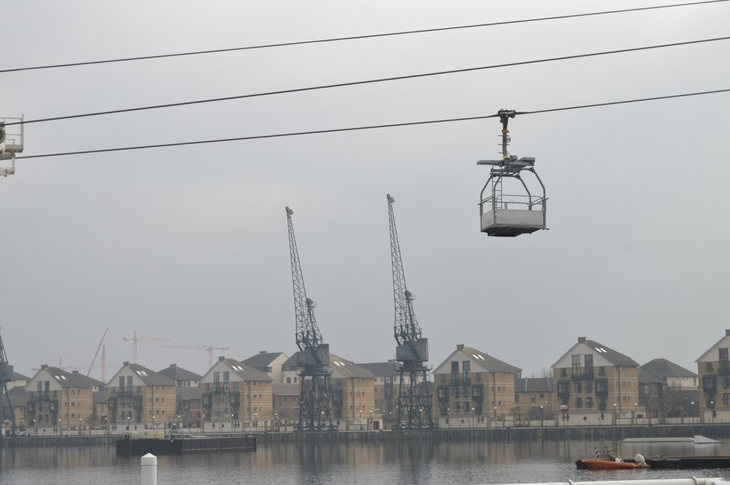
Transport has always been a hot issue in London. At the dawn of the 20th century, the city was often gridlocked, with horse-drawn traffic and early motor vehicles vying for space.
What — wondered the Evening Post of 16 January 1901 — would happen if London's transport were controlled by Americans? Would the resourcefulness and can-do spirit of the 'Yankees' sort things out? You betcha.
The article is presented as if a London journalist had asked an American colleague these questions. Here are some of the ideas.
River traffic
"Look at the splendid river you have, entirely unused for passenger traffic. I guess if we had our way for a little while we'd have the up-to-datest fleet of steamers you ever saw plying between Putney and Blackwall or Woolwich. There'd be no waiting. We'd have piers all up and down the river on both sides, and the steamers would call at each every four of five minutes. Winter would make no difference. The three-deckers, or two-deckers if three were too high for your bridges, would run all through the seasons. Egad, to think the Thames should ebb and flow practically to no purpose as it does now!"
21st century verdict: Well, we kind of got there in the end. The Thames Clippers do indeed have piers all along the river. As it happens, they reach precisely from Putney to Woolwich, just as our Yankee friend suggested. The four to five minute wait is ambitious, though. At best, the clippers run every 20 minutes.

Cable cars
"And then your Embankment! What a magnificent thoroughfare for cable cars! We'd run a double line up and down between Blackfriars and Westminster. There'd be no intervals, but the cars should run practically continuously day and night. Cost! What does cost matter to a wealthy city like London?"
21st century verdict: London only has one cable car, out at Greenwich, and it's largely a tourist attraction. Still, the Yankee visionary speaks with foresight when he remarks on a devil-may-care attitude to cost. The Thames cable car cost £24 million of taxpayer money, and won't pay back its build costs for some years.

Elevated railways
"But that is not all. If Americans ran London there would be elevated railways along the whole length of the Victoria Embankment. One would be overhanging the river, and the other would be above the pavement on the opposite side of the road."
21st century verdict: A cable car AND two railways? How much east-west traffic does this bit of London need? Plus, the idea had already been proposed 60 years before, by a British speculator. London already had plenty of elevated railways, such as the long viaduct out of London Bridge. The city eventually got a whole network in the shape of the DLR — much of which runs at raised level. But none of this ever troubled the Embankment. Perhaps a DLR extension westward from Tower Gateway might be a smart idea?

Would a Yankee ever run London's transport?
Perhaps not by coincidence, just as this newspaper was asking the question, a very influential Yankee was getting to grips with the London Underground. Charles Tyson Yerkes had made a fortune building elevated railways in Chicago. In 1902 he established the Underground Electric Railways Company, to take control of existing lines and build new ones. Under Yerkes, major sections of the Bakerloo, Northern and Piccadilly line were constructed. His efforts did not ease the gridlock at ground level, but they did revolutionise the underground network.

More recently, the American transit planner Bob Kiley served as the first Commissioner of Transport for London, from 2001 to 2006.
Image and excerpt from the British Newspaper Archive. (c) The British Library Board.




